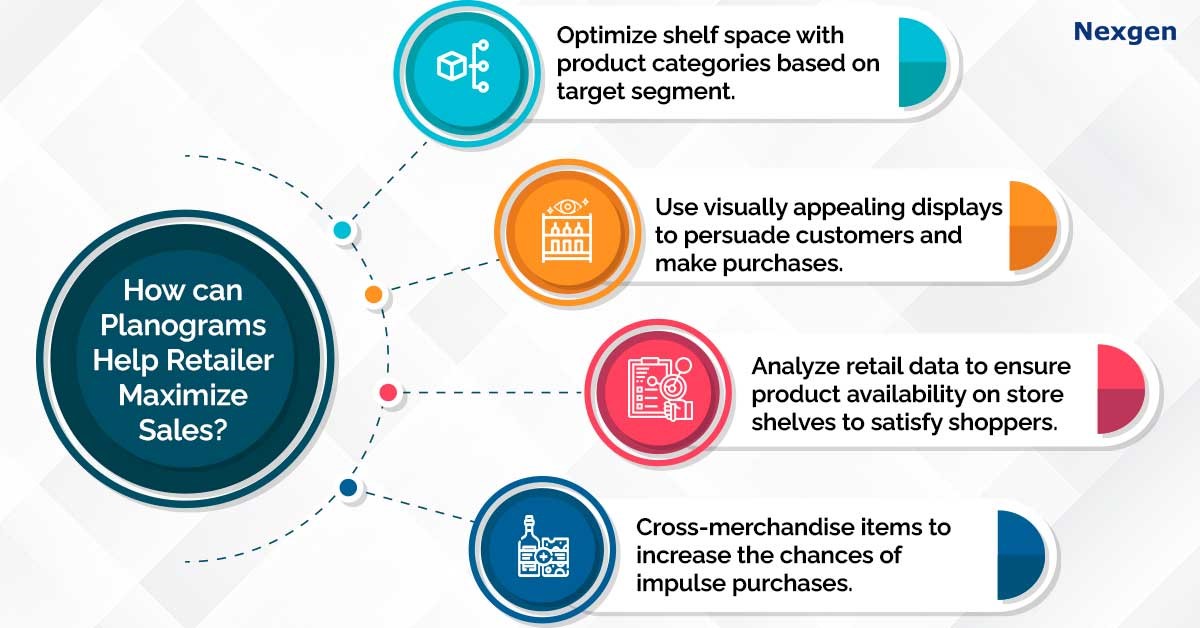There are many misconceptions regarding the real purpose and function of a planogram. Most people often imagine that planograms are nothing more than just pictures which can be built without sales data. This is not true; in fact, you simply waste your time and money if you try to create data-less planograms for your stores. In the olden days, retail stores were set up from an operational point of view. They concentrated more on increasing sales and generating profits and did not give much importance to customer needs and demands. However, changes in consumer buying habits coupled with advancements in technology have increased competition, which forces stores to gain maximum customer attention. Factors such as store layout, product placement, inventory and category management are also crucial for improving a customer’s shopping experience. Combining all these factors under one roof, you get planograms. Let us consider one example.
Retailer A is planning to open their first store. They have heard about planograms and would like to use them from the beginning. If Retailer A decides to implement planograms in the first place, it will only require minimal change management and initial capital. Add to those the practical and financial benefits of implementing planograms. As your business grows, you can scale your efforts when rolling out planograms, ensuring compliance with implementation and monitoring. Retailer B has recently opened its fifth store. They opened all their stores without planograms and have now decided to invest in them. Retailer B will need more change management and higher investment. If not planned correctly, this can result in a loss. In this situation, if you are Retailer A, it would be easier to grow your business with the right shelf planning in the first place.
What is a Planogram?
Planograms are a visual representation of how products should be placed on retail shelves to maximize sales and improve the shopping experience. This helps retailers entice customers to make purchases and boost in-store sales. However, there are several misconceptions and consequences associated with not using planograms. The following are some misconceptions regarding planograms:

1. Planograms are expensive and time-consuming.
A common misconception about planograms is that they are too expensive and require more time to implement. This is far from the truth. Let us consider Nexgen POG as an example. We offer three paid software editions: basic, standard, and premium. Every edition makes it possible to create performance-enhancing data-driven planograms. If you are a small retailer, it would be better to use basic or standard solutions, since they provide you with everything you require for great performance at a reasonable cost. Let us consider the example of Retailer A again. Once they reach five stores, they are more successful or competitive than when Retailer B had opened multiple stores. That is because they maximized their retail shelf space by stocking the right products using the planogram software. Planograms can be easily implemented for multiple stores. With the help of retail data, planograms can be easily created for in-store success.
2. Planograms are all about product placement and are only for large retailers.
While product placement is a critical component of planograms, most people mistakenly believe that planograms are always about shelf execution only. It also concerns shelf planning, inventory management, category management, compliance, visual representation, and promotional strategies. Planograms are universal templates that suit all stores. Each store is unique, and planograms can be customized to meet the specific needs of the store, by considering factors such as location, store size, target audience, and product mix. For this reason, planograms are considered to benefit retailers of all sizes, from small stores to large retailers. In fact, planograms are especially useful for small retailers with limited retail space, as they help optimize shelf space and improve product visibility.
3. Planograms are nothing but pictures.
Planograms are meant to make stores visually appealing and enticing for shoppers. One of the misconceptions about planograms is that they are nothing more than pretty pictures. A performance-enhancing planogram is visually appealing because of factors such as the right product flow, correct product execution, enticing store layout design and displays. In addition, planograms are regularly updated based on changes in consumer preferences and market trends by considering past sales data to entice shoppers.
Overview of Nexgen POG
Nexgen POG is a robust and user-friendly cloud-based visual merchandising tool. It is designed for quick and efficient planogramming with minimal effort. Planogram in retail can be designed by easily dragging and dropping the products. The multi-device compatibility feature of POG allows you to obtain, share and edit planogram on any device, including your phone. It helps in designing store-specific planograms for increased product visibility and sales.
Get Your Free Trial Now!